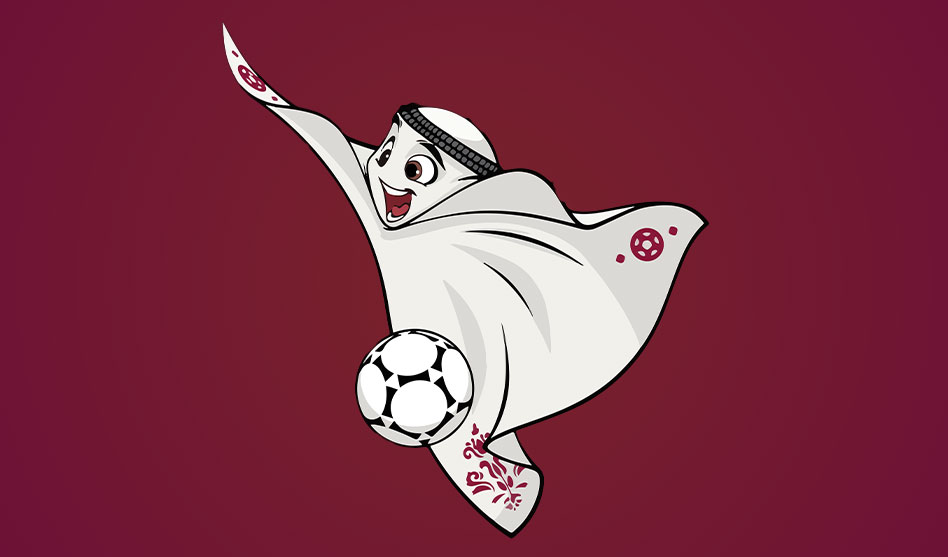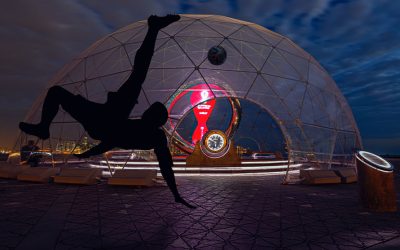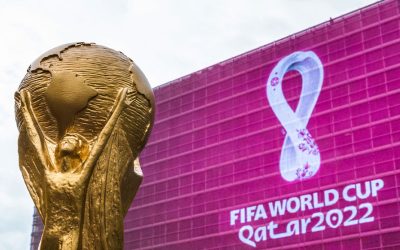World Cup Willie – England 1966, the First Mascot in FIFA World Cup
Willie the lion, the inaugural World Cup mascot, was a big success and a trailblazer in the employment of mascots for important international sporting events. Although the competition only took place in England, the lion is a common symbol of the UK, and Willie is sporting a jersey with the words “WORLD CUP” on it.
Juanito – Mexico 1970
A young man donning the national colors of Mexico and a hat (with the words “MEXICO 70”). His name is a Spanish diminutive of the popular name “Juan.”
Tip and Tap – West Germany 1974
Two young boys dressed in white Germany shirts, one bearing the letters WM (Weltmeisterschaft, German for World Cup) and the other bearing the number 74.
Guachito – Argentina 1978
A young man sporting the white and light blue Argentina playing uniform. His neckerchief, whip, and cap are traditional gaucho attire. The wording ARGENTINA ’78 was on the cap.
Naranjito – Spain 1982
A little orange, a common fruit in Spain, with a wide grin served as the team’s mascot in 1982. He was dressed in the home nation’s national team uniform. Its name is derived from the Spanish word naranja, which means orange, and the diminutive suffix “-ito”.
Pique – Mexico 1986
Following the theme of fruits and vegetables from the previous competition, Mexico 1986’s mascot was a jalapeno chili pepper, which is well-known for being a component of Mexican cuisine. The chili was also sporting a mustache and a sombrero. Its name is derived from the Spanish word picante, which means hot or sour.
Ciao – Italy 1990
This team’s mascot had a unique appearance; it was a stick figure player with an Italian tricolor body and a football head. The body’s red, white, and green bricks gave it a lego-like appearance. Its name is a salutation in Italian.
Striker, The World Cup Pup – USA 1994
For USA ’94, the American people selected a dog as their national symbol. Dogs are a popular pet in the US. Striker donned a shirt that read “USA 94” and featured the American flag’s tricolor.
Footix – France 1998
The American people decided on a dog as their national emblem for USA ’94. In the US, dogs are a popular pet. Striker wore a shirt with the words “USA 94” and the tricolor of the American flag.
Ato, Kaz, and Nik – Korea/Japan 2002
The first time more than one mascot—in this case, three—was used in a tournament occurred during this one. Ato, Kaz, and Nik were artificially intelligent, futuristic beings that were orange, purple, and blue. The sport they played was called “Atmoball” (a fictional football-like sport). Online and in-person voting for the three names took place in the host countries’ McDonald’s restaurants.
Goleo VI and his sidekick Pille – Germany 2006
The lion made a comeback in 2006, this time sporting no pants and a Germany shirt with the number 06 on it. The talking football he owned was called Pille. Goleo, a combination of the terms “goal” and “leo,” the Latin word for lion, while “Pille” is slang for a football in Germany, is a result of combining these two words.
Zakumi – South Africa 2010
Leopards are a typical animal in South Africa, and Zakumi is one. He goes by the name Zakumi and is a friendly yellow leopard with green hair who is sporting a South Africa 2010 shirt. The colors of Zakumi are green and gold, which are those of South Africa’s national sports teams. The word Zakumi is derived from the letters “ZA,” which stands for South Africa, and “Kumi,” which in various African languages means “10.”
Fuleco – Brazil 2014
The official mascot of the Brazil 2014 FIFA World Cup was Fuleco. The IUCN Red List lists the Brazilian three-banded armadillo, or Fuleco, as a vulnerable species. On November 25, 2012, Fuleco made his formal debut during the weekly Fantástico entertainment program on Brazilian broadcaster TV Globo.
Zabivaka – Russia 2018
Zabivaka, a wolf whose name in Russian means “the one who scores,” is the official mascot of the 2018 World Cup in Russia. Red shorts and a blue and white T-shirt, the colors of the Russian National team, are worn by the mascot. After more than a million Russians cast their votes in a poll on FIFA.com, the mascot was selected.
La’eeb – Qatar 2022
Despite having a little resemblance to the traditional fabric headdress worn by males in Qatar, this “indescribable” object from the mascot-verse is defined as being “indescribable”. The Arabic term la’eeb means “super-talented player.”











